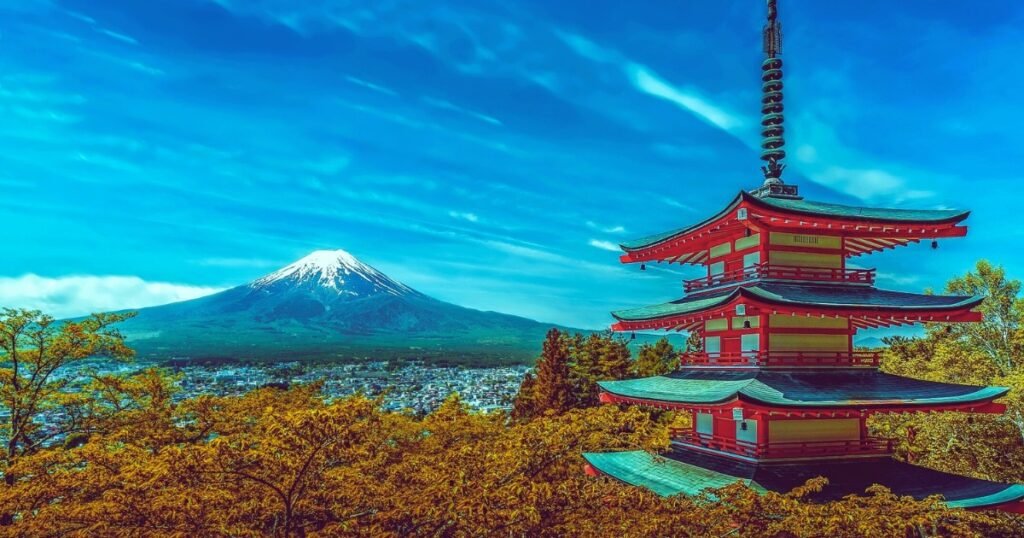Japan is a dream destination for many travelers, thanks to its rich culture, jaw-dropping scenery, high-tech cities, and warm hospitality. Whether you’re visiting ancient temples in Kyoto, soaring skyscrapers in Tokyo, or the serene onsen towns in Hokkaido, Japan offers experiences like nowhere else.
If you’re planning your first trip to Japan, this guide will walk you through everything you need to know about how to travel in Japan, covering transportation, cultural etiquette, money-saving tips, and much more.
Table of Contents
Why Visit Japan?
Japan’s unique blend of traditional culture and cutting-edge modernity makes it one of the most exciting places to explore. Here are just a few reasons why Japan should be on your bucket list:
- Cultural experiences – From ancient temples and shrines to sumo tournaments, tea ceremonies, and festivals.
- Exceptional public transportation – The train network is fast, efficient, and connects almost every corner of the country.
- World-class cuisine – Sushi, ramen, tempura, wagyu beef…need we say more?
- Seasonal beauty – Visit for cherry blossoms in spring or vibrant autumn foliage.
Exploring Japan with Ease
Traveling in Japan is incredibly easy, thanks to its excellent public transportation system and tourist-friendly infrastructure. Here’s a breakdown of how you can make the most of your trip.
Transportation in Japan
Shinkansen (Bullet Train): The Ultimate Way to Travel
The shinkansen isn’t just transportation; it’s an experience. These sleek high-speed trains can travel at over 200 mph, connecting major cities like Tokyo, Osaka, Kyoto, and Hiroshima in mere hours.
- Pro tip: Get a Japan Rail Pass if you plan to travel across multiple regions. It’s valid for unlimited rides on the shinkansen (except Nozomi and Mizuho trains) and JR-operated trains.
- Cost example (as of October 2023):
| Duration | Japan Rail Pass Price (Adult) | Estimated Single Shinkansen Trip (Tokyo–Kyoto) |
|---|---|---|
| 7 days | ¥29,650 ($200) | ¥13,320 ($90) |
| 14 days | ¥47,250 ($320) | ¥13,320 x 2 trips |
Regional Train Networks
Japan’s rail network is divided into segments operated by JR (Japan Rail) and private lines. The ICOCA, PASMO, or Suica card is essential for seamless travel through regional cities, buses, and some ferries.
City Transportation
- Subways and buses are convenient for getting around urban areas like Tokyo or Kyoto.
- Taxis are easy to find but pricier—only use them if public transport isn’t an option.
- Bicycles are popular in cities like Kyoto and Okayama for shorter commutes.
Navigational Apps
Use tools such as Google Maps, HyperDia, or Navitime for English-friendly route searches.
Cultural Do’s and Don’ts When Traveling in Japan
Essential Etiquette
- Don’t tip – Tipping just isn’t part of Japanese culture, and could even cause confusion.
- Be quiet on public transportation – Speaking loudly is discouraged.
- Take off your shoes – It’s normal in homes, temples, and some restaurants.
- Learn basic phrases – Even a “thank you” (“arigatou”) or “hello” (“konnichiwa”) will go a long way.
Dining in Japan
- Slurping is acceptable (and encouraged) when eating ramen!
- Some restaurants, particularly sushi venues, have unique customs—follow the lead of locals.
Public Behavior
- Bowing is customary when greeting others.
- While the Japanese are reserved, they’re always polite and willing to assist if you appear lost.
Tipping Tips for an Affordable Stay
Affordable Accommodation
- Budget travelers will find options such as capsule hotels, hostels, or ryokan inns (for a more cultural experience). For extended stays, Airbnb or manga kissa (internet cafes with sleeping cubicles) is a unique, affordable option.
Discount Attractions
- Many cities offer regional passes granting you unlimited public transport and discounted entry to attractions. Example passes include the Kansai Thru Pass or JR Tokyo Wide Pass.
Dining for Less
- Eating at convenience stores like 7-Eleven, FamilyMart, or Lawson might sound odd but provides delicious, high-quality meals for under $5.
Free Attractions
- Many public parks, shrines, and temples (Tokyo’s Meiji Shrine) are free to visit.
Avoiding Hidden Charges
- Japanese ATMs often charge fees—look for ATMs in post offices or 7-Eleven stores. Prepare cash for older establishments that may not accept credit cards.
FAQ About How To Travel in Japan
Q1. When is the best time to visit Japan?
The seasons are equally rewarding. Visit March to April for cherry blossoms, July-August for festivals and fireworks, and October-November for stunning autumn colors.
Q2. Is Japan safe for solo travelers?
Yes, Japan consistently ranks as one of the safest countries in the world, making it ideal for solo travelers.
Q3. Do people speak English?
While proficiency varies, many signs, menus, and train announcements include English. Learn a few Japanese phrases to make interactions smoother.
Q4. Is WiFi readily available?
Yes, free WiFi is available in train stations, tourist centers, and cafes. Alternatively, rent a portable WiFi router or local SIM card for consistent connectivity.
Q5. What’s the average daily budget for a trip to Japan?
A modest budget of $100-$150 per day should cover food, accommodation, and local transport for most travelers.
Start Planning Your Unforgettable Journey
Traveling in Japan is an experience unlike any other. From the seamless transportation system to the blend of tradition and innovation, this country has something to captivate every kind of traveler.
Start by planning your route, picking up a Japan Rail Pass, learning a few Japanese phrases, and preparing your taste buds for a culinary adventure. Whether you’re seeking bustling city streets, tranquil temples, or breathtaking views of Mount Fuji, Japan delivers.
Pack your bags, and get ready to soak in the wonders of this beautiful country!

